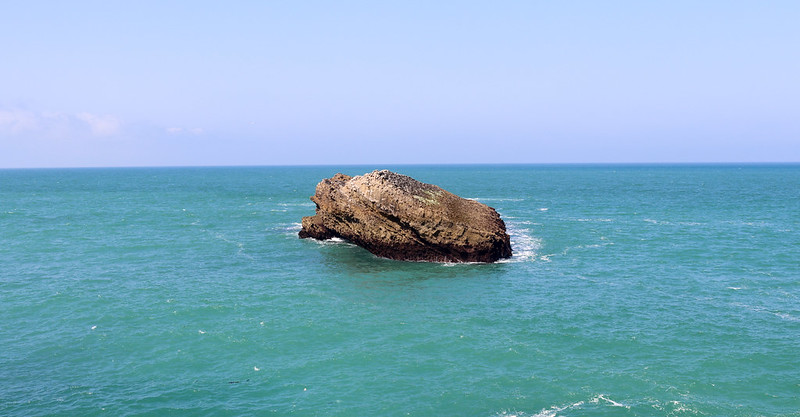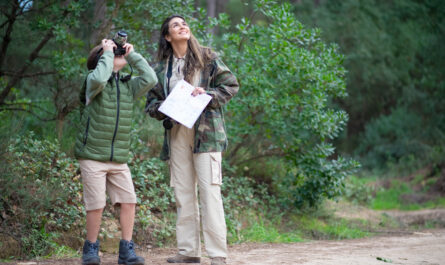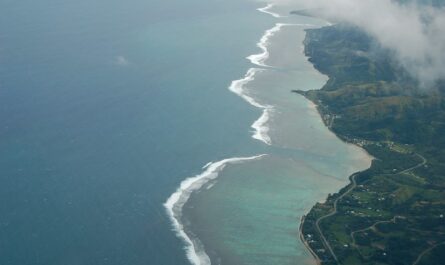New Britain, the largest island in Papua New Guinea’s Bismarck Archipelago, holds a significant place in the history of World War II. The island, with its dense jungles, rugged coastlines, and strategic location, became a crucial battleground between Allied forces and the Japanese Empire. Its shores and interiors witnessed intense military operations, air raids, and naval battles, leaving behind a legacy etched in the landscape and memory of the Pacific War.
Today, New Britain offers history enthusiasts, travelers, and researchers a unique opportunity to explore the remnants of this tumultuous period. From war relics scattered across the island to solemn memorials honoring those who served, New Britain’s WWII history serves as both a poignant reminder of the past and an educational experience for future generations.
1. The Strategic Importance of New Britain in WWII
New Britain’s location in the South Pacific made it a strategic asset for both the Japanese and Allied forces during World War II. Situated northeast of mainland Papua New Guinea, the island controlled key maritime routes and provided a staging ground for military campaigns across the Pacific.
Japanese Occupation and Rabaul’s Role
In early 1942, Japan captured Rabaul, New Britain’s largest town, and transformed it into a formidable military base. Rabaul’s natural deep-water harbor allowed the Japanese to house a significant fleet, and its airfields supported their operations across the Solomon Islands and New Guinea.
- Rabaul Fortress: The Japanese fortified Rabaul extensively, constructing underground tunnels, bunkers, and anti-aircraft defenses. At its peak, Rabaul housed over 100,000 Japanese troops, making it one of the most heavily defended outposts in the Pacific.
Allied Counterattacks
Recognizing Rabaul’s strategic importance, the Allies launched a series of operations to neutralize it. While a direct invasion was deemed too costly, the strategy of “bypassing” the stronghold through aerial bombardments and naval blockades effectively isolated Rabaul, cutting it off from reinforcements and supplies.
2. Key WWII Battles and Campaigns on New Britain
New Britain’s wartime history is marked by several pivotal campaigns and battles, each contributing to the Allied victory in the Pacific.
Battle of Rabaul
The Japanese invasion of Rabaul in January 1942 marked the beginning of New Britain’s role in WWII. Australian forces stationed on the island were overwhelmed by the Japanese assault, leading to the capture of Rabaul and the establishment of a major Japanese base.
- War Relics in Rabaul: Today, visitors can explore remnants of this battle, including wrecked aircraft, sunken ships, and Japanese fortifications.
Operation Cartwheel
In 1943, the Allies launched Operation Cartwheel, a multi-pronged campaign aimed at isolating and neutralizing Rabaul. The operation involved airstrikes, naval bombardments, and amphibious landings on surrounding islands to encircle the Japanese stronghold.
- Cape Gloucester Landings: One of the most significant battles during Operation Cartwheel was the U.S. Marine Corps’ assault on Cape Gloucester in December 1943. The objective was to secure airfields and establish a base for further operations in the Pacific.
Australian Campaigns
Following the American-led operations, Australian forces took over the responsibility of securing New Britain. From 1944 to 1945, they engaged in a series of jungle warfare campaigns aimed at containing Japanese forces in the interior of the island.
3. Exploring New Britain’s WWII Sites
New Britain’s wartime history is preserved through numerous sites that offer a glimpse into the events that unfolded during the war. These locations provide an opportunity to understand the island’s role in the Pacific Theater while paying tribute to those who fought and sacrificed.
Rabaul War Museum
Located in the town of Kokopo, near Rabaul, the Rabaul War Museum houses an extensive collection of WWII artifacts, including weapons, uniforms, maps, and photographs. The museum provides valuable insights into the battles fought on New Britain and the broader Pacific conflict.
Japanese Tunnels
The network of underground tunnels constructed by the Japanese is one of Rabaul’s most intriguing wartime remnants. These tunnels, which stretch for miles, were used to store ammunition, house troops, and protect against Allied air raids. Guided tours allow visitors to explore these subterranean fortifications and learn about their strategic significance.
Wreckage of WWII Aircraft
The jungles and waters around New Britain are dotted with the wreckage of aircraft from both sides of the conflict. Notable sites include:
- Barge Tunnel: A Japanese barge tunnel near Rabaul still contains remnants of wartime transport vessels.
- Black Cat Pass: This site is home to a wrecked U.S. bomber, offering a haunting reminder of the air battles fought over the island.
War Cemeteries and Memorials
New Britain is home to several cemeteries and memorials dedicated to the soldiers who lost their lives during the war. The Bita Paka War Cemetery, located near Kokopo, is the final resting place of Commonwealth troops who perished during the Pacific campaigns.
4. The Impact of War on New Britain’s People and Environment
The war left a lasting impact on New Britain’s population and landscape. While the island’s natural beauty has largely recovered, scars of the conflict remain, both physically and culturally.
Displacement and Hardship
The local Tolai people faced significant displacement and hardship during the war. Villages were destroyed, and many residents were forced to relocate as military operations intensified.
Environmental Changes
Deforestation and infrastructure development during the war altered parts of New Britain’s landscape. Airfields, roads, and fortifications built by the Japanese and Allies reshaped the island’s terrain, some of which remain visible today.
5. Preserving New Britain’s WWII History
Efforts to preserve New Britain’s wartime heritage are ongoing, with local governments, historians, and tourism operators working to document and protect its historical sites.
Historical Documentation
Projects to catalog and map WWII relics on New Britain help ensure that these artifacts are preserved for future generations. Oral histories from local elders also contribute to understanding the human impact of the war.
Sustainable Tourism
Eco-friendly tourism initiatives aim to balance the preservation of historical sites with the promotion of New Britain as a travel destination. Responsible tourism helps generate income for local communities while raising awareness of the island’s history.
6. Travel Tips for Exploring New Britain’s Battlegrounds
For those planning to visit New Britain, here are some tips to ensure a rewarding and respectful experience:
- Engage Local Guides: Hiring knowledgeable local guides enhances your understanding of the sites and supports the community.
- Respect Memorials: Remember that war cemeteries and memorials are solemn places. Maintain a respectful demeanor during your visit.
- Prepare for the Terrain: Many WWII sites are located in remote areas. Wear sturdy footwear and be prepared for jungle hikes.
- Learn Before You Go: Familiarize yourself with New Britain’s WWII history to fully appreciate the significance of the locations you visit.
7. Why Visit New Britain’s WWII Battlegrounds?
New Britain’s WWII history offers a unique perspective on the Pacific War. Unlike more well-known battlefields, the island’s sites retain an air of authenticity and isolation, providing an immersive experience for history enthusiasts. By visiting New Britain, travelers not only gain insights into a pivotal chapter of WWII but also contribute to the preservation of its cultural and natural heritage.
Conclusion: Remembering the Legacy of New Britain
New Britain’s role in World War II is a testament to the resilience and courage of those who fought on its shores. The island’s battlegrounds, relics, and memorials serve as poignant reminders of the sacrifices made during the Pacific campaigns.
As you walk through the tunnels of Rabaul, dive among sunken warplanes, or stand in solemn silence at Bita Paka War Cemetery, you become part of a journey to honor and preserve history. New Britain invites you to explore its past while appreciating its present, ensuring that the lessons of war are never forgotten.



